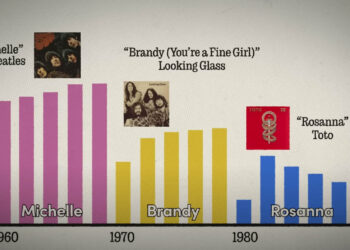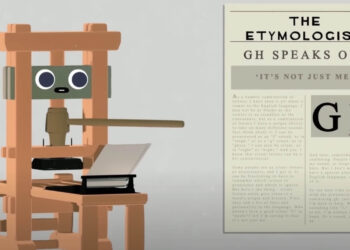
- Image via Wikipedia
Recently, BioMed Central’s Virology Journal published a case report speculating that the woman in the Biblical story in which Jesus cures her of fever was suffering from the flu. The case report was obviously quite tongue-in-cheek, akin to many others in the literature, but also applied clinical reasoning to the scant evidence offered by the Bible.
In most case reports that seek to plumb historical facts, investigators review documentation, try to translate what they can into modern meaning, then attempt a diagnosis, usually for the sport of it. From gout in the Holy Roman Emperor to stroke in Woodrow Wilson to the death of King Edward VI, many journals allow researchers this kind of indulgence from time to time.
However, while the editors of Virology Journal seemed initially tickled by this traditional sort of academic and intellectual sport, the blogosphere was not. Very quickly, after a firestorm on the blogs (examples here and here) and across social media in general, the article was retracted, with a revealing comment from the editor-in-chief:
I wish to apologize for the publication of the article entitled ”Influenza or not influenza: Analysis of a case of high fever that happened 2000 years ago in Biblical time”, which clearly does not provide the type of robust supporting data required for a case report and does not meet the high standards expected of a peer-reviewed scientific journal. . . . Whilst only ever intended as an opinion piece and also a bit of relief from the ‘normal’ business of the journal, the speculations contained within this article clearly would be better expressed outside the confines of a peer-reviewed journal.
Even when publishing an article to provide a bit of “relief,” I guess you can’t mess with the sacrosanct, be it peer-review or Jesus.
While part of the problem may be that a religious document is probably not the best place to search for clinical evidence, the real problem seems to have been caused by the real-time Web and social media. As one of the authors noted in a published email about the events:
I was especially astonished that so many comments were made outside the scope of the journal. In medical writing, colleagues would usually make comments in the “letter to the editors” and the authors would respond in the subsequent correspondence. I once again am very sorry to have caused inconvenience to the Journal and anxiety to myself. I think I will never write this type of article any more – not worth the hassles!
I’ll wager that the authors and editors expected this little bit of fluff to pass quietly into oblivion, a harmless lark in an obscure journal. It’s not an unreasonable expectation. In the traditional journal world, reports like this were shielded from widespread evaluation due to relatively small circulations in tight-knit communities. Even in the last decade, the lack of robust commenting on journal articles has helped insulate scholars.
Today, things are different. Now, a science blogosphere bent on sensationalism and hungry for topics is perfectly willing to pick up on a silly article and beat the bejeezus out of it.
It’s worth noting that the authors of the speculative case report are mostly from China and Hong Kong (one blogger believes that how the abstract is written reveals the authors to be devout Christians, but I think that’s a real stretch). Whether their backgrounds intensified or blunted sensitivity to the religious dimensions of their historical case cogitation isn’t clear, but the fact that publication in a Western journal led to de facto censorship based on social media pressures says something negative about publication in the West and the culture following journals.
People do science. Every once in a while, they’ll play with its conceits and boundaries. Bloggers and social media denizens should keep their senses of humor. There was nothing here to get all feverish over. It was just a bit of fun.
Discussion
17 Thoughts on "Good God! Can’t a Journal Author Have Any Fun Anymore?"
Pity. My favorite tongue-and-cheek scientific article was published in BMJ, in which the researchers “set out to answer the age old question ‘Where have all the bloody teaspoons gone?’”
Readers responded in BMJ’s Rapid Response section with their own witty comments. Luckily, there were no irate science bloggers in 2005.
Lim, M. S. C., Hellard, M. E., & Aitken, C. K. 2005. The case of the disappearing teaspoons: longitudinal cohort study of the displacement of teaspoons in an Australian research institute. BMJ 331: 1498-1500. http://bmj.bmjjournals.com/cgi/content/full/331/7531/1498?ehom
Deadpan delivery of material is not without risk. I was amazed that people took my April 1 “prank” seriously, even my own brother. The article was subsequently selected for further distribution on Medscape. The accompanying Youtube video apparently was also taken seriously, much to my chagrin.
Citrome L. Evidence-based flying: a new paradigm for frequent flyers. Int J Clin Pract. 2010 May;64(6):667-8. Epub 2010 Mar 30
http://www.wiley.com/WileyCDA/PressRelease/pressReleaseId-71917.html
http://www.medscape.com/viewarticle/721068
http://www.medscape.com/viewarticle/723643
Speaking as a science blogger (I’m only sometimes irate) I’m also disappointed that it’s gone.
It was a lark, and now it’s gone it adds to the
perception of scientists as dryballs with no sense of humour. The world is a little bit poorer (to be fair, I’m not sure that Cath intended this to happen.
Welcome to the age of controversy. I am surprised that you are surprised.
To begin with, irony, satire and other subtle forms of humor are often missed in print. This is a constant problem in my listserv, where I caution members to flag their attempts at humor. But the basic problem is that such forms depend heavily on one’s having specific beliefs. The people being mocked do not find it funny.
More to the point, by coincidence the June 25 issue of Science features a full page review of the book “Miracle Cures” by Robert Scott. The reviewer notes how inflammatory such issues are.
Let’s not forget the BMJ paper that famously concluded that the parachute’s ability to save lives has never been subjected to rigorous study. After all, who’d want to be a control in that trial?
http://www.bmj.com/cgi/content/abstract/327/7429/1459
It does seem that our friends across the pond have a particular talent for this sort of thing, more of which might not be a bad idea. Perhaps we need study of whether not taking ourselves so seriously can have positive health benefits. Nah. It’d never pass IRB review.
I think BMJ does a great job with funny articles. Among my favorites from years past are “Orthopedic surgeons are like gorillas” (really: orthopedic surgeons are more like gorillas than are general surgeons) and an article correlating surgical productivity with the surgeon’s chattiness level and concluding with suggested conversational gambits that can be used by anesthesiologists. (Most effective: “Dr Jones does this procedure in a completely different way!”)
The problem with the Virology article, as I saw it, was that the basis was far too thin for the supposed humor. Even Homer Simpson knows that for it to be funny, it must also be true – and there must at least be enough “there” there for plausibility to rest on.
I am not aware that there is a legal requirement that people have a sense of humor, not even in Great Britain. What I do wonder about is the social wisdom (a synonym for tact) about exercising humor about religious topics. Even atheists can be polite about such things. Were my kids to propose to write such an article (fat chance), I would remind them that one never ever makes fun of people’s religious beliefs.
Joe Esposito
Ah yes, those humorless science bloggers. We just can’t take a joke. But first, I’m not convinced–by the paper nor the author’s response to it–that it was intended to be humorous. Second, it’s not exactly an “obscure journal.” Granted, it’s not one of the tops in microbiology, but the impact factor puts it in roughly the middle of the pack. Third, those other articles are *good* and thought-provoking. As I mentioned in my own post, I love the convergence of historical data and disease epidemiology, and I’m on board with a speculative diagnosis as long as there is a convincing story made for it. Indeed, one other one I’ve cited previously, but forgot about in my blog post, was the origin of Poe’s Red death: http://www.ncbi.nlm.nih.gov/pmc/articles/PMC2738525/pdf/02-0176_FinalAD.pdf
And Philip, I did blog about the spoon article as well back in 2005: http://scienceblogs.com/aetiology/2006/01/groundbreaking_study.php If the authors of the Bible flu paper had been half as funny (or a quarter as rigorous), I wouldn’t have had any problems with it.
Absolutely love that bit: “a science blogosphere bent on sensationalism”. This is exactly what the pharyngula blog is all about and it’s not surprise that it jumped all over this one.
1. If it was a bit of fun, why didn’t the journal just say that? Or indeed the authors? Why did they retract the paper instead?
2. How come scientists are allowed to have fun when writing journal articles, but we bloggers aren’t when we blog?
3. If referring to “our Lord Jesus Christ” isn’t strong evidence that the author is a devout Christian, then what is?
Overall I agree with rpg – if it was a lark, then it is a pity it has gone.
IF it was a lark, I agree, but like Bob I’m fairly sure it wasn’t meant that way.
And RPG is right – my tweet that brought the whole thing to light was a “LOL, look at this weird paper that got published” thing, not an “OMG we need to purge the scientific literature of all mention of religious texts” thing.
I hope the journal will now publish a serious scientific article on the pathology of religions.
As a former publisher of scholarly works, and as a person who is known to have a sense of irony and even humor, I would like to suggest that serious articles are published in peer-reviewed media, and more ironic stuff is published in the ever-expanding world of sometimes irate bloggers. Publishing tongue-in-cheek literature in serious works is obviously not a new thing (look up the entry ‘apopodouballomai’ in the Pauly-Wissowa Realenzyklopädie der Klassischen Altertumswissenschaft, and be surprised), but it is potentially harmful to the reputation of journals, even when the better part of the readers do not make a big deal of it. With an entire new and uncontrollable regiment of commentaries entering through the digital cornucopiae, it has become more difficult for authors and publishers to justify themselves for pulling funny tricks every once and a while.
This is one of the comments which led to the removal of the article. If you will notice she uses her position at the University in her comment but fails to declare her ‘conflict of interest’ which is she is an activist atheist.
Comment by: Dr Rosemary Redfield, University of British Columbia
Title: This is not science.
Comment:
This paper in no way qualifies as science. It doesn’t even qualify even as a case report, because the authors have no personal experience of this case. They basically say that, if their assumption that the woman had influenza is correct, then their conclusion that she was cured is justified.
The citations are also disgraceful. The authors cite only the bible, a web page about temperature measurements, and themselves (seven times!).
If BioMed Central hopes to build a reputation as a home for serious science then they need to first withdraw this paper and then have some serious discussions with this journal’s editor.
Competing interests:
None.



